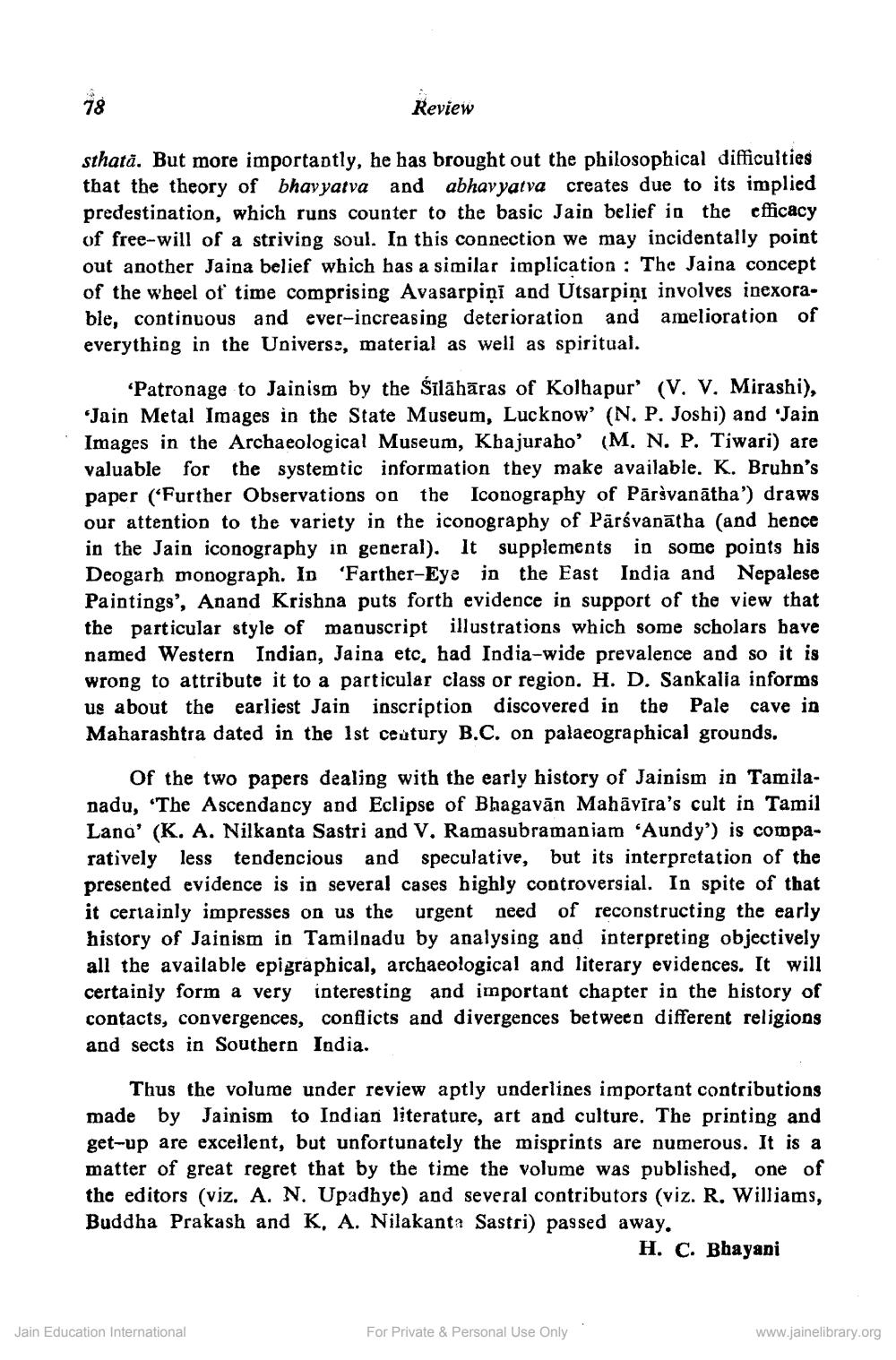________________
78
Review
sthată. But more importantly, he has brought out the philosophical difficulties that the theory of bhavyatva and abhavyatva creates due to its implied predestination, which runs counter to the basic Jain belief in the efficacy of free-will of a striving soul. In this connection we may incidentally point out another Jaina belief which has a similar implication: The Jaina concept of the wheel of time comprising Avasarpiņi and Utsarping involves inexorable, continuous and ever-increasing deterioration and amelioration of everything in the Universe, material as well as spiritual.
'Patronage to Jainism by the Sīlāhāras of Kolhapur' (V. V. Mirashi), 'Jain Metal Images in the State Museum, Lucknow' (N. P. Joshi) and 'Jain Images in the Archaeological Museum, Khajuraho' (M. N. P. Tiwari) are valuable for the systemtic information they make available. K. Bruhn's paper (Further Observations on the Iconography of Parsvanatha') draws our attention to the variety in the iconography of Pārsvanatha (and hence in the Jain iconography in general). It supplements in some points his Deogarh monograph. In 'Farther-Eye in the East India and Nepalese Paintings', Anand Krishna puts forth evidence in support of the view that the particular style of manuscript illustrations which some scholars have named Western Indian, Jaina etc, had India-wide prevalence and so it is wrong to attribute it to a particular class or region. H. D. Sankalia informs us about the earliest Jain inscription discovered in the Pale cave in Maharashtra dated in the 1st century B.C. on palaeographical grounds.
Of the two papers dealing with the early history of Jainism in Tamilanadu, 'The Ascendancy and Eclipse of Bhagavan Mahavira's cult in Tamil Lana' (K. A. Nilkanta Sastri and V. Ramasubramaniam 'Aundy') is comparatively less tendencious and speculative, but its interpretation of the presented evidence is in several cases highly controversial. In spite of that it certainly impresses on us the urgent need of reconstructing the early history of Jainism in Tamilnadu by analysing and interpreting objectively all the available epigraphical, archaeological and literary evidences. It will certainly form a very interesting and important chapter in the history of contacts, convergences, conflicts and divergences between different religions and sects in Southern India.
Thus the volume under review aptly underlines important contributions made by Jainism to Indian literature, art and culture. The printing and get-up are excellent, but unfortunately the misprints are numerous. It is a matter of great regret that by the time the volume was published, one of the editors (viz. A. N. Upadhye) and several contributors (viz. R. Williams, Buddha Prakash and K, A. Nilakanta Sastri) passed away.
H. C. Bhayani
Jain Education International
For Private & Personal Use Only
www.jainelibrary.org




